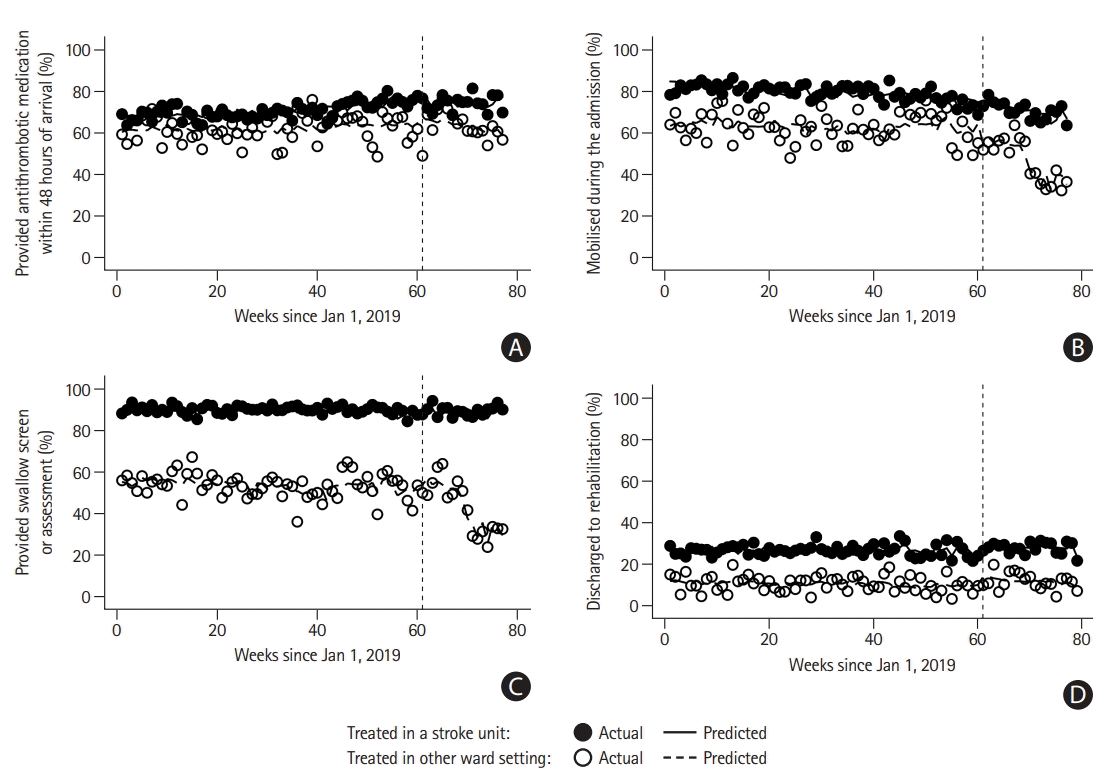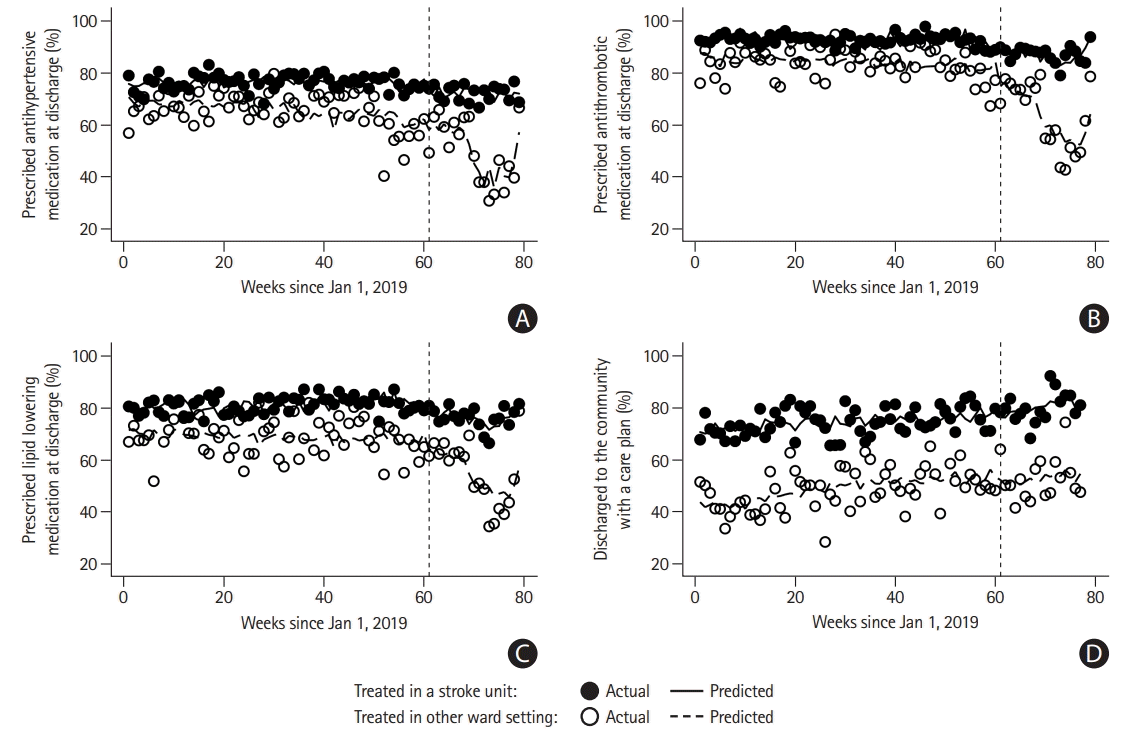1. McCabe R, Schmit N, Christen P, D’Aeth JC, Løchen A, Rizmie D. Adapting hospital capacity to meet changing demands during the COVID-19 pandemic. BMC Med. 2020; 18:329.

3. Coote S, Cadilhac DA, O'Brien E, Middleton S; Acute Stroke Nurses Education Network (ASNEN) Steering Committee. Letter to the editor regarding: critical considerations for stroke management during COVID-19 pandemic in response to Inglis et al., Heart Lung Circ. 2020;29(9):1263-1267. Heart Lung Circ. 2020; 29:1895–1896.
4. Stroke Unit Trialists’ Collaboration. Organised inpatient (stroke unit) care for stroke. Cochrane Database Syst Rev. 2013; 2013:CD000197.
5. Cadilhac DA, Andrew NE, Lannin NA, Middleton S, Levi CR, Dewey HM, et al. Quality of acute care and long-term quality of life and survival: the Australian Stroke Clinical Registry. Stroke. 2017; 48:1026–1032.

6. Cadilhac DA, Kim J, Tod EK, Morrison JL, Breen SJ, Jaques K, et al. COVID-19 pandemic impact on care for stroke in Australia: emerging evidence from the Australian Stroke Clinical Registry. Front Neurol. 2021; 12:621495.

7. Cadilhac DA, Lannin NA, Anderson CS, Levi CR, Faux S, Price C, et al. Protocol and pilot data for establishing the Australian Stroke Clinical Registry. Int J Stroke. 2010; 5:217–226.

8. Tu JV, Willison DJ, Silver FL, Fang J, Richards JA, Laupacis A, et al. Impracticability of informed consent in the Registry of the Canadian Stroke Network. N Engl J Med. 2004; 350:1414–1421.

9. Linden A, Arbor A. Conducting interrupted time-series analysis for single- and multiple-group comparisons. Stata J. 2015; 15:480–500.

10. Markus HS, Brainin M. COVID-19 and stroke: a global World Stroke Organization perspective. Int J Stroke. 2020; 15:361–364.
11. Chen CH, Liu CH, Chi NF, Sung PS, Hsieh CY, Lee M, et al. Maintenance of stroke care quality amid the coronavirus disease 2019 outbreak in Taiwan. J Stroke. 2020; 22:407–411.

12. Desai SM, Guyette FX, Martin-Gill C, Jadhav AP. Collateral damage: impact of a pandemic on stroke emergency services. J Stroke Cerebrovasc Dis. 2020; 29:104988.
13. Hoyer C, Ebert A, Huttner HB, Puetz V, Kallmünzer B, Barlinn K, et al. Acute stroke in times of the COVID-19 pandemic: a multicenter study. Stroke. 2020; 51:2224–2227.
14. Rudilosso S, Laredo C, Vera V, Vargas M, Renú A, Llull L, et al. Acute stroke care is at risk in the era of COVID-19: experience at a comprehensive stroke center in Barcelona. Stroke. 2020; 51:1991–1995.

15. Cadilhac DA, Ibrahim J, Pearce DC, Ogden KJ, McNeill J, Davis SM, et al. Multicenter comparison of processes of care between stroke units and conventional care wards in Australia. Stroke. 2004; 35:1035–1040.

16. Stroke Foundation. National Stroke Audit Acute Services Report 2019. Melbourne: Stroke Foundation;2019.
17. Bernal JL, Cummins S, Gasparrini A. Interrupted time series regression for the evaluation of public health interventions: a tutorial. Int J Epidemiol. 2017; 46:348–355.
18. Schaffer AL, Dobbins TA, Pearson SA. Interrupted time series analysis using autoregressive integrated moving average (ARIMA) models: a guide for evaluating large-scale health interventions. BMC Med Res Methodol. 2021; 21:58.

19. Merkler AE, Parikh NS, Mir S, Gupta A, Kamel H, Lin E, et al. Risk of ischemic stroke in patients with coronavirus disease 2019 (COVID-19) vs patients with influenza. JAMA Neurol. 2020; 77:1–7.

21. Krishnamurthi RV, Ikeda T, Feigin VL. Global, regional and country-specific burden of ischaemic stroke, intracerebral haemorrhage and subarachnoid haemorrhage: a systematic analysis of the global burden of disease study 2017. Neuroepidemiology. 2020; 54:171–179.







 PDF
PDF Citation
Citation Print
Print



 XML Download
XML Download